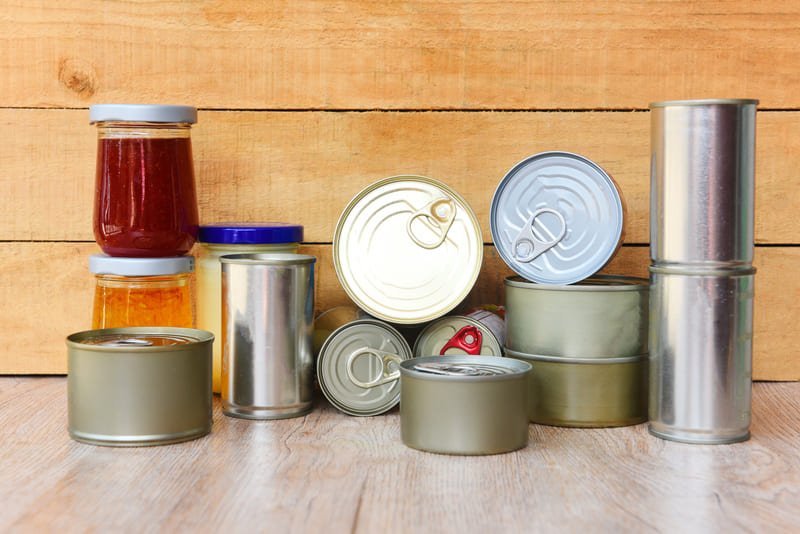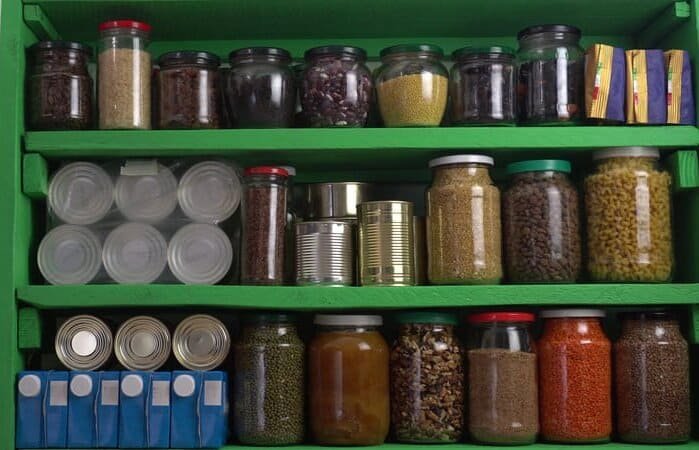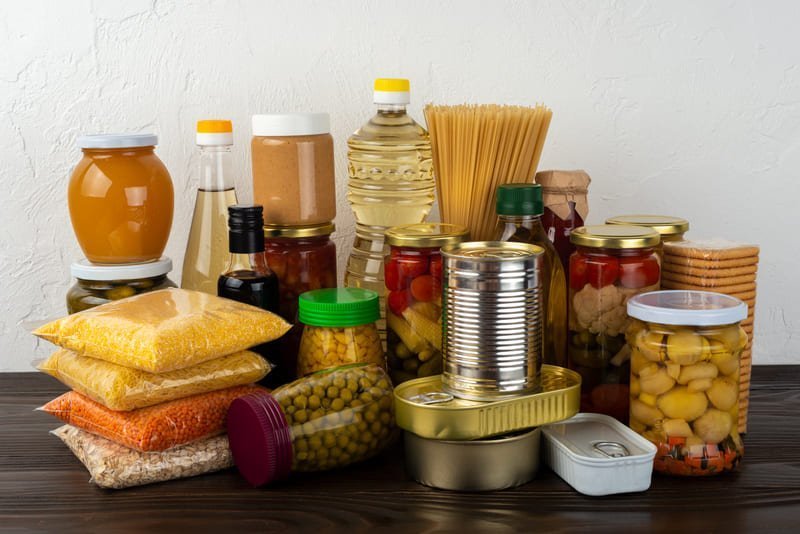When it comes to finding the perfect high-protein snack that provides long-lasting energy and is convenient for on-the-go snacking, look no further than premium pemmican beef jerky. Made from a traditional recipe using nutritious meat and natural ingredients, this air-dried beef snack is the ideal choice for those seeking a healthy and satisfying option.
Pemmican has a rich history as a portable food that offers a powerful combination of protein and fat. It has been used for centuries as a survival staple due to its compactness, long shelf life, and high energy yield. By grinding lean dried meat and mixing it with melted fat, often with the addition of berries or nuts, pemmican becomes a nutrient-rich powerhouse that provides essential sustenance, making it the perfect hiking food.
Key Takeaways:
- Premium pemmican beef jerky is a high-protein snack that offers long-lasting energy.
- It is made from a traditional recipe using natural ingredients and nutritious meat.
- Pemmican is a compact and portable food, making it an excellent choice for outdoor activities.
- This air-dried beef snack has a long shelf life, making it ideal for stocking up or emergencies.
- With its rich history and nutrient-rich composition, premium pemmican beef jerky is a delicious and healthy option for those seeking a satisfying snack.
What is Pemmican?
Pemmican is a concentrated blend of fat and protein that has been used as a survival food by indigenous peoples of North America, Arctic explorers, and fur traders. It is a long-lasting, energy-packed product made by grinding dried lean meat, traditionally bison, elk, or deer, into a powder and mixing it with melted fat. This mixture is often combined with berries or nuts for added flavor and nutrients. The resulting pemmican is then compressed into small cakes or bars, making it a compact and convenient source of sustenance.
Pemmican is known for its exceptional shelf life, lasting for years without refrigeration or additional preservation methods. Its high fat and protein content provides sustained energy, making it an essential survival food. The inclusion of berries or nuts not only adds variety to the taste but also contributes additional nutrients to this nutrient-dense snack. Pemmican’s compactness and high energy yield make it an ideal choice for outdoor adventures, camping trips, or emergency situations.
Traditional Pemmican Recipe:
“I have pounded up the dried meat fine, mixed it with an equal quantity of suet melted in the sun, pounded up together. This is the unflavored meat and when wanted for use, it is taken and cooked or warmed in a bladder or in a pot, a piece the size of an egg swells up and makes as much as 3 eggs is said but I have not tried as yet… Some of the Indians would use bear’s oil, grease, or anything of that description instead of the suet while some used salmon grease.”[1]
Source: Canadian Living
Pemmican Benefits:
- Concentrated blend of fat and protein
- Long shelf life
- Compact and portable
- High energy yield
- Contains essential nutrients from lean meat
- Possibility to include additional flavors and nutrients through berries or nuts
| Pemmican | Value |
|---|---|
| Concentrated blend of fat and protein | Sustained energy |
| Long shelf life | Stays fresh for years without refrigeration |
| Compact and portable | Ideal for outdoor activities and survival situations |
| High energy yield | Provides substantial energy in a small portion |
| Contains essential nutrients from lean meat | Ensures a well-rounded snack |
| Possible addition of flavors and nutrients through berries or nuts | Enhances taste and nutritional profile |
References:
- Bruce, T. (2012, November 1). Let them eat pemmican! Canadian Living. https://www.canadianliving.com/blogs/food/charcutepalooza_middle_east_africa_and_ghosts_in_the_pantry/2012/11/01/let-them-eat-pemmican
What is Jerky?
 Jerky is a popular snack made from lean meat that is sliced into thin strips, marinated, and then dried. The process of drying, whether through smoking or dehydration, concentrates the flavor of the meat and gives jerky its signature chewy texture. While beef is the most common type of jerky, other variations include elk, deer, turkey, and even exotic meats like alligator.
Jerky is a popular snack made from lean meat that is sliced into thin strips, marinated, and then dried. The process of drying, whether through smoking or dehydration, concentrates the flavor of the meat and gives jerky its signature chewy texture. While beef is the most common type of jerky, other variations include elk, deer, turkey, and even exotic meats like alligator.
One of the reasons jerky is loved by many is its portability and long shelf life. Its compact size and lightweight nature make it a convenient and portable food to enjoy on the go. Whether you’re hiking, camping, or simply need a protein-rich snack during the day, jerky is the perfect choice. It provides a quick and easy source of energy while satisfying those savory cravings.
What sets jerky apart from other snacks is its wide range of flavors and textures. Depending on the marinade and type of meat used, jerky can offer a plethora of taste experiences. From smoky and savory to sweet or spicy, there’s a jerky flavor to suit every palate. The chewy texture adds to the enjoyment, giving you a satisfying snack that keeps your taste buds engaged.
Take a look at the table below for a comparison of different types of jerky:
| Type of Jerky | Meat | Flavor | Texture |
|---|---|---|---|
| Beef Jerky | Beef | Smoky, savory | Chewy |
| Elk Jerky | Elk | Gamey, slightly sweet | Tender, chewy |
| Turkey Jerky | Turkey | Herb-infused, mild | Moist, chewy |
| Alligator Jerky | Alligator | Rich, unique | Firm, chewy |
As you can see, jerky offers a variety of flavors and textures depending on the type of meat used. It’s a snack that can cater to different taste preferences and dietary needs.
Pemmican vs Jerky: Taste and Texture
 When it comes to taste, jerky offers a wider range of flavors compared to pemmican. Jerky’s taste profile can vary from smoky and savory to sweet or spicy, depending on the marinade and preparation process. Pemmican, on the other hand, has a more uniform taste profile, predominantly meaty with the added richness of fat and a slight sweetness if berries are included.
When it comes to taste, jerky offers a wider range of flavors compared to pemmican. Jerky’s taste profile can vary from smoky and savory to sweet or spicy, depending on the marinade and preparation process. Pemmican, on the other hand, has a more uniform taste profile, predominantly meaty with the added richness of fat and a slight sweetness if berries are included.
Texture-wise, jerky has a chewy consistency that provides a satisfying experience with every bite. Its firm yet tender texture adds to the overall enjoyment of the snack. In contrast, pemmican has a dense, compact texture resulting from the combination of ground meat and fat. This unique texture gives pemmican a substantial and satisfying mouthfeel, perfect for those looking for a more substantial snack.
Flavor Comparison:
| Snack | Taste |
|---|---|
| Jerky | Smoky, Savory, Sweet, Spicy |
| Pemmican | Meaty with a hint of sweetness |
Texture Comparison:
| Snack | Texture |
|---|---|
| Jerky | Chewy |
| Pemmican | Dense and Compact |
Whether you prefer the varied flavors of jerky or the unique taste and texture of pemmican, both snacks offer a delightful snacking experience. The choice between pemmican and jerky ultimately comes down to personal preference. Some may enjoy the adventurous flavor range of jerky, while others appreciate the uniform taste profile and dense texture of pemmican. Whichever snack you choose, be sure to savor the rich taste and satisfying texture it offers.
Pemmican vs Jerky: Nutrition Value
 Both pemmican and jerky are high in protein, making them excellent choices for a nutritious snack. Pemmican is calorie-dense due to its combination of dried meat and fat, providing long-lasting energy. It is particularly rich in fats, which are essential for survival in harsh conditions. Jerky, on the other hand, is lower in fat and can be a better option for those monitoring their fat intake. It is a lean source of protein and can contain additional nutrients from the marinade ingredients.
Both pemmican and jerky are high in protein, making them excellent choices for a nutritious snack. Pemmican is calorie-dense due to its combination of dried meat and fat, providing long-lasting energy. It is particularly rich in fats, which are essential for survival in harsh conditions. Jerky, on the other hand, is lower in fat and can be a better option for those monitoring their fat intake. It is a lean source of protein and can contain additional nutrients from the marinade ingredients.
When comparing the nutrition value of pemmican and jerky, it’s important to consider the macronutrient composition and additional nutrients they offer.
| Nutrition | Pemmican | Jerky |
|---|---|---|
| Protein Content | High | High |
| Calorie Density | Calorie-dense | Calorie-dense |
| Fat Content | Rich in fats | Lower in fat |
| Additional Nutrients | Varies with ingredients | Varies with marinade |
| Suitable for Monitoring Fat Intake | No | Yes |
| Long-lasting Energy | Essential | Essential |
Both pemmican and jerky are high in protein, which is essential for muscle development and repair. They are suitable for individuals looking to boost their protein intake, whether for post-workout recovery or as a convenient snack option.
Pemmican is calorie-dense, meaning it provides a concentrated source of energy. This makes it a suitable choice for individuals engaging in physically demanding activities or for those in need of long-lasting energy, such as hikers or explorers. The high fat content in pemmican is necessary for sustained energy and survival in extreme conditions.
On the other hand, jerky is lower in fat compared to pemmican, making it a better option for individuals monitoring their fat intake. It still provides a good amount of protein while being leaner overall. The marinade ingredients used in jerky can add additional nutrients such as vitamins, minerals, and antioxidants.
When considering pemmican vs jerky in terms of nutrition, it is important to remember that individual dietary needs and preferences may vary. Some individuals may thrive on the higher fat content of pemmican, while others may prefer the leaner option provided by jerky.
Overall, both pemmican and jerky can be part of a balanced diet, providing essential nutrients and energy. It ultimately comes down to personal preferences and requirements. Monitoring fat intake, considering additional nutrients, and understanding their impact on long-lasting energy are key factors when deciding between pemmican and jerky for your snacking needs.
Pemmican vs Jerky: Accessibility and Cost
 When it comes to accessibility, jerky takes the lead over pemmican. You can find various options of jerky in most grocery stores, convenience stores, and online retailers, making it easily available for purchase.
When it comes to accessibility, jerky takes the lead over pemmican. You can find various options of jerky in most grocery stores, convenience stores, and online retailers, making it easily available for purchase.
Pemmican, on the other hand, is less commonly found in commercial settings. To get your hands on this traditional snack, you may need to place a special order or visit specialty stores that carry pemmican. This exclusivity enhances its appeal for those on the hunt for unique and hard-to-find food items.
In terms of cost, jerky generally offers a more affordable option compared to pemmican. The price of jerky can vary depending on the quality and brand, but overall, it is typically more wallet-friendly than pemmican. Pemmican, being rarer and made with specialized techniques, is often priced at a higher range.
| Aspect | Jerky | Pemmican |
|---|---|---|
| Availability | Widely available in grocery and convenience stores, as well as online retailers. | Less commonly found in commercial settings, may require a special order or visit to specialty stores. |
| Cost | Generally more affordable compared to pemmican. | Rarer and typically more expensive. |
Summary: Jerky emerges as the winner in terms of accessibility, being readily available in various retail locations and online. It is also more budget-friendly compared to pemmican, which is harder to come by and often comes with a higher price tag.
Pemmican vs Jerky: Shelf Life and Portability
Both pemmican and jerky have impressive shelf lives when stored properly. Pemmican’s high fat content and low moisture make it a nonperishable food that can last for years without refrigeration, making it an ideal choice for long journeys or emergency situations. Jerky also boasts a relatively long shelf life, typically lasting several months to a year, depending on storage conditions.
Both snacks offer the advantage of compactness and energy density, making them convenient and portable options for on-the-go snacking. Whether you’re hiking, camping, or simply need a quick and satisfying snack, pemmican and jerky have got you covered.
| Pemmican | Jerky |
|---|---|
| Potential shelf life | Potential shelf life |
| Years | Several months to a year |
| Storage requirements | Storage requirements |
| Proper storage requires minimal exposure to moisture | Proper storage requires airtight packaging and protection from moisture |
| Compactness | Compactness |
| Dense and easily packable | Lightweight and easy to carry |
| Energy density | Energy density |
| High energy yield due to fat content | High protein content for sustained energy |
Conclusion
After exploring the unique characteristics and flavors of both pemmican and jerky, it is clear that each snack offers its own appeal. Pemmican stands out for its compactness, long shelf life, and high energy yield, making it an excellent choice for outdoor adventures or emergency situations. On the other hand, jerky offers a wider range of flavors and textures, providing a satisfying snacking experience.
Ultimately, the decision between pemmican and jerky comes down to individual preference. Some may prefer the simplicity and concentrated nutrition of pemmican, while others may opt for the diverse flavors and chewy texture of jerky. The choice is yours.
However, if you’re looking for superior taste and quality, look no further than Mahogany Smoked Meats. With their dedication to crafting delicious, high-quality jerky, they offer a delightful snacking experience that is sure to satisfy your cravings. Whether you choose pemmican or jerky, Mahogany Smoked Meats is the perfect place to start your snacking journey.
FAQ
What is pemmican?
Pemmican is a concentrated blend of fat and protein traditionally used as a survival food. It is made by grinding dried lean meat, such as bison, elk, or deer, into a powder and mixing it with melted fat, often with added berries or nuts.
What is jerky?
Jerky is a popular snack made by slicing lean meat into thin strips, marinating it, and then drying it. The drying process concentrates the meat’s flavor and gives jerky its signature chewy texture.
How do pemmican and jerky differ in taste and texture?
Jerky offers a wider range of flavors, including smoky, savory, sweet, and spicy, depending on the marinade and preparation. Pemmican has a more uniform taste profile, predominantly meaty with the added richness of fat and a slight sweetness if berries are included. Texture-wise, jerky has a chewy consistency, while pemmican has a dense, compact texture.
Are pemmican and jerky high in protein?
Yes, both pemmican and jerky are high in protein, making them excellent choices for a nutritious snack.
Which snack is more calorie-dense?
Pemmican is more calorie-dense due to its combination of dried meat and fat, providing long-lasting energy. It is particularly rich in fats, which are essential for survival in harsh conditions.
Are there any differences in accessibility and cost between pemmican and jerky?
Jerky is more readily available, found in most grocery stores, convenience stores, and online retailers. Pemmican is less commonly found in commercial settings and may require a special order or a visit to a specialty store. In terms of cost, jerky is generally more affordable compared to pemmican, which is rarer and typically more expensive.
How long do pemmican and jerky last?
Pemmican has a long shelf life due to its high fat content and lack of moisture, lasting for years without refrigeration. Jerky also has a relatively long shelf life, typically several months to a year, depending on storage conditions.
Are pemmican and jerky portable snacks?
Yes, both pemmican and jerky are compact and energy-dense, making them convenient and portable options for on-the-go snacking.












